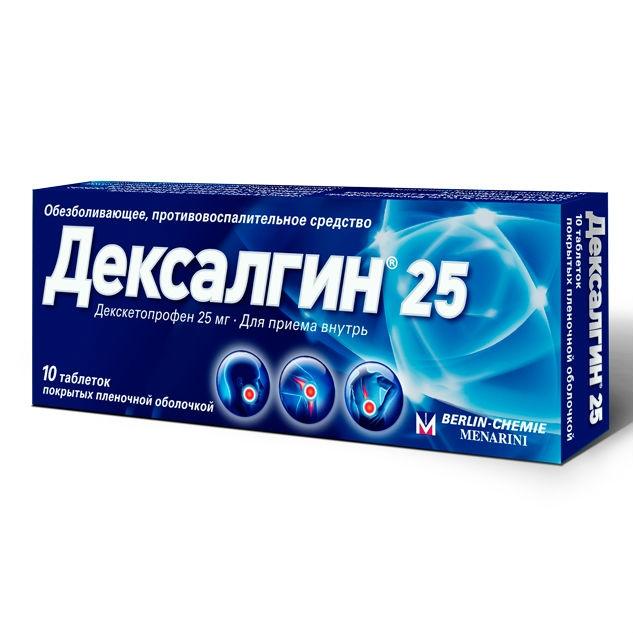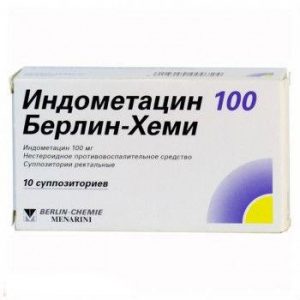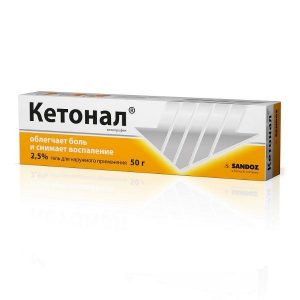Description
Release form
Film-coated tablets.
Packing
10 pcs
Pharmacological action
Pharmacodynamics
Nonsteroidal anti-inflammatory drug. It has anti-inflammatory, analgesic and antipyretic effects.
The mechanism of action of the drug is based on the inhibition of prostaglandin synthesis due to the suppression of cyclooxygenase. The analgesic effect occurs 30 minutes after taking the drug, its duration is from 4 to 6 hours.
Pharmacokinetics
Absorption
After taking the drug inside Cmax, dexketoprofen in humans is achieved on average after 30 minutes (15-60 minutes).
Distribution and excretion of
Plasma Protein Binding – 99%. The distribution time and T1 / 2 of dexketoprofen are 0.35 and 1.65 hours, respectively. The average Vd is less than 0.25 l / kg. The main part of the drug is excreted in the urine in the form of metabolites (after glucuronidation).
Indications
Mild to moderate pain syndrome in the following diseases and conditions:
acute and chronic inflammatory diseases of the musculoskeletal system (rheumatoid arthritis, spondylitis, arthrosis, osteochondrosis)
dysmenorrhea
toothache.
Contraindications
Hypersensitivity to deksketoprofenu or other NSAIDs
gastric ulcer and duodenal ulcer
gastrointestinal bleeding
active bleeding of various origins
increased bleeding
anticoagulant therapy
Crohn s disease
ulcerative colitis
bronchial asthma (including history)
severe heart failure
severe renal failure
severe liver failure
pregnancy and lactation.
Use during pregnancy and lactation
The drug is contraindicated for use during pregnancy and lactation due to the lack of reliable clinical data, confirming the safety of its use.
Composition
1 tablet contains:
Active substances:
dexketoprofen trometamol 36.9 mg, which corresponds to a 25 mg dexketoprofen content.
Excipients:
microcrystalline cellulose – 141.2 mg,
corn starch – 49.6 mg,
sodium carboxymethyl starch (type A) – 27.1 mg,
glyceryl palmitostearate – 5.2 mg.
Film composition:
hypromellose – 1.34 mg,
titanium dioxide (E171) – 0.36 mg,
macrogol 6000 – 0.6 mg,
propylene glycol – 0.42 mg.
Dosage and administration
Installed individually.
The average recommended single dose is 12.5 mg (1/2 tab. ) from 1 to 6 times / day every 4-6 hours as needed or 25 mg (1 tab.) from 1 to 3 times / day every 8 hours.
The maximum daily dose is 75 mg (6 tab.).
In patients with impaired liver or kidney function, in the elderly, the drug should be started in lower doses – not more than 50 mg / day.
The drug is not intended for prolonged use: the duration of administration should not exceed 3-5 days.
Side effects of
From the digestive system: heartburn, abdominal pain rarely – erosive and ulcerative lesions of the gastrointestinal tract.
From the side of the central nervous system and peripheral nervous system: headaches, dizziness, nervousness, sleep disturbance, paresthesia.
From the cardiovascular system: palpitations, increased blood pressure.
Allergic reactions: skin rash, bronchospasm.
Other: chills, swelling of the extremities, photosensitivity rarely – a change in the picture of peripheral blood, impaired renal function.
When used according to the indications and in recommended doses, the drug is well tolerated.
Drug Interaction
Concomitant use of Dexalgin 25 with other NSAIDs may increase the risk of side effects.
Concomitant use of Dexalgin 25 with lithium preparations may increase the latter’s concentration in blood plasma.
Caution should be exercised when using NSAIDs less than 24 hours before use or after the end of methotrexate therapy, as its blood levels (and therefore toxicity) may increase.
Some cases of bleeding with the use of NSAIDs and anticoagulants have been described.
Overdose
Treatment: gastric lavage if necessary – symptomatic therapy.
Storage conditions
Store in a dark place, out of the reach of children, at a temperature not exceeding 30 ° C.
Expiration
2 years.
Pharmacy terms
Over-the-counter
Dosage form
Dosage form
tablets
Berlin-Chemie / Menarini Germany



